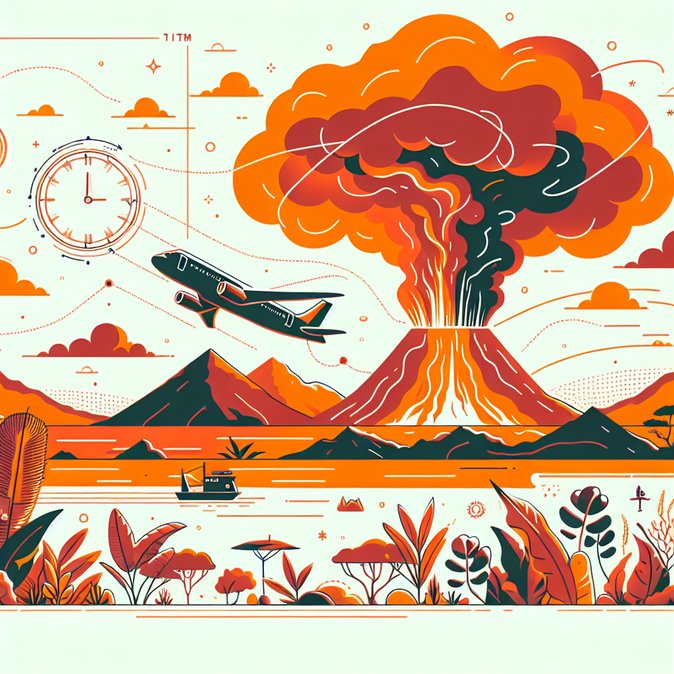
Airlines operating between India and the Gulf were forced into emergency rerouting on 24–25 November after Ethiopia’s Hauli Gubbi volcano sent a massive ash cloud drifting across key high-altitude corridors. Mumbai-based Akasa Air cancelled services to Jeddah, Kuwait and Abu Dhabi, citing unsafe flying conditions, while IndiGo diverted a Kannur–Abu Dhabi flight to Ahmedabad. Middle-East carriers including Air Arabia also reported delays.
Abu Dhabi’s Zayed International Airport remained open, but operators triggered their volcanic-ash contingency manuals—raising minimum altitude thresholds, dispatching extra engine-inspection teams and offering fee-free rebooking. The UAE’s General Civil Aviation Authority issued a NOTAM instructing pilots to avoid airways UM688 and UL425, where ash concentrations were highest.
![Volcanic ash plume forces flight cancellations to Abu Dhabi; airlines activate contingency plans]()
Although the disruption was short-lived, it exposed vulnerabilities in a corridor that handles more than 500 passenger and cargo movements daily. Travel-risk consultants advise firms with tight project timelines to build ash-related buffers into flight schedules during the winter dry-season, when East African volcanic activity can interact with prevailing winds toward the Gulf.
For mobility managers the immediate task is to reconcile out-of-policy hotel and per-diem claims triggered by the cancellations and to remind travellers to keep boarding passes and delay letters for insurance purposes. Longer term, companies should verify that evacuation and medical-assistance providers include volcanic-ash exposure in coverage, as fine particulates can pose respiratory risks if aircraft cabin filters are compromised.
The Directorate General of Civil Aviation in India has opened a post-event review with airlines to refine early-warning protocols; similar consultations are expected with UAE regulators, which could lead to faster airspace-closure decisions in future eruptions.
Abu Dhabi’s Zayed International Airport remained open, but operators triggered their volcanic-ash contingency manuals—raising minimum altitude thresholds, dispatching extra engine-inspection teams and offering fee-free rebooking. The UAE’s General Civil Aviation Authority issued a NOTAM instructing pilots to avoid airways UM688 and UL425, where ash concentrations were highest.

Although the disruption was short-lived, it exposed vulnerabilities in a corridor that handles more than 500 passenger and cargo movements daily. Travel-risk consultants advise firms with tight project timelines to build ash-related buffers into flight schedules during the winter dry-season, when East African volcanic activity can interact with prevailing winds toward the Gulf.
For mobility managers the immediate task is to reconcile out-of-policy hotel and per-diem claims triggered by the cancellations and to remind travellers to keep boarding passes and delay letters for insurance purposes. Longer term, companies should verify that evacuation and medical-assistance providers include volcanic-ash exposure in coverage, as fine particulates can pose respiratory risks if aircraft cabin filters are compromised.
The Directorate General of Civil Aviation in India has opened a post-event review with airlines to refine early-warning protocols; similar consultations are expected with UAE regulators, which could lead to faster airspace-closure decisions in future eruptions.










